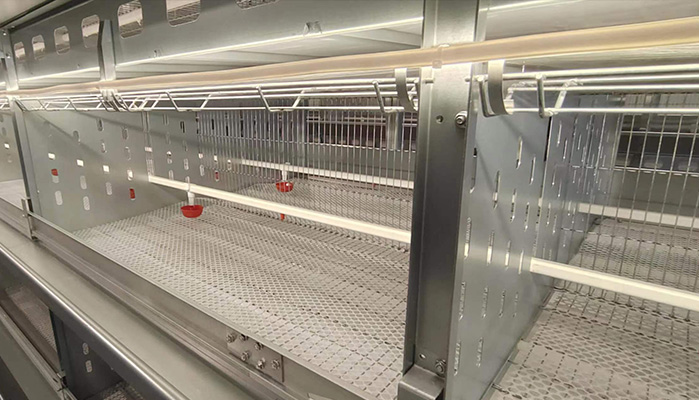The number of chickens per square meter of raised area that can be accommodated by automated breeding equipment is called breeding density, and the feeding and drinking positions occupied by each chicken are also indispensable conditions for mastering breeding density. If the density is too high, the flock is crowded, increasing environmental humidity, uneven feeding, uneven development of the chick flock, susceptibility to diseases and pecking habits, weakened chick constitution, increased mortality rate, and decreased growth rate. Low density, although beneficial for the survival and growth of chicks, is not conducive to insulation and is not economical. The density should be adjusted according to factors such as the type, breed, breeding method, season, age, and ventilation status of the chicks. Automated breeding equipment should be used to raise chicks in cages, and the population should be correspondingly sparse as the age increases. The density should be reduced by about 30% at 3-4 weeks of age, and then by about 15% at 5-6 weeks of age.
Egg type chicks aged 1-4 weeks occupy a feeding trough position of 2-2.5 centimeters per chick, and increase to 5.0 centimeters per chick aged 5-6 weeks. If a feeding bucket is used, 35 chicks are fed in each bucket at 1-4 weeks of age, and 25 chicks are fed in each bucket at 5-6 weeks of age. One week old chicks usually use a vacuum water dispenser, which can provide water for 50-70 chickens. If a sink is used, the sink position for each 0-6 week old chick is 1-2 centimeters.
Broiler chickens are suitable for high-density breeding, but it also depends on specific conditions. Generally, online flat farming can have a higher density than mat farming, with good ventilation conditions and an appropriate increase in density. In winter, the breeding density can be increased by 10%, while in summer, it should be reduced by 10% -20%. Due to the fast growth rate of broilers, which can generally be launched at the age of 40-45 days, the feeding density of their automated breeding equipment is calculated based on the number of chickens per square meter at the time of production. Reasonable feeding density can provide equal opportunities for chicks to drink and eat, which is beneficial for improving uniformity. It can also prevent the occurrence of bad habits such as pecking the anus and feathers, and pay attention to the air quality and ventilation of the chicken coop.









